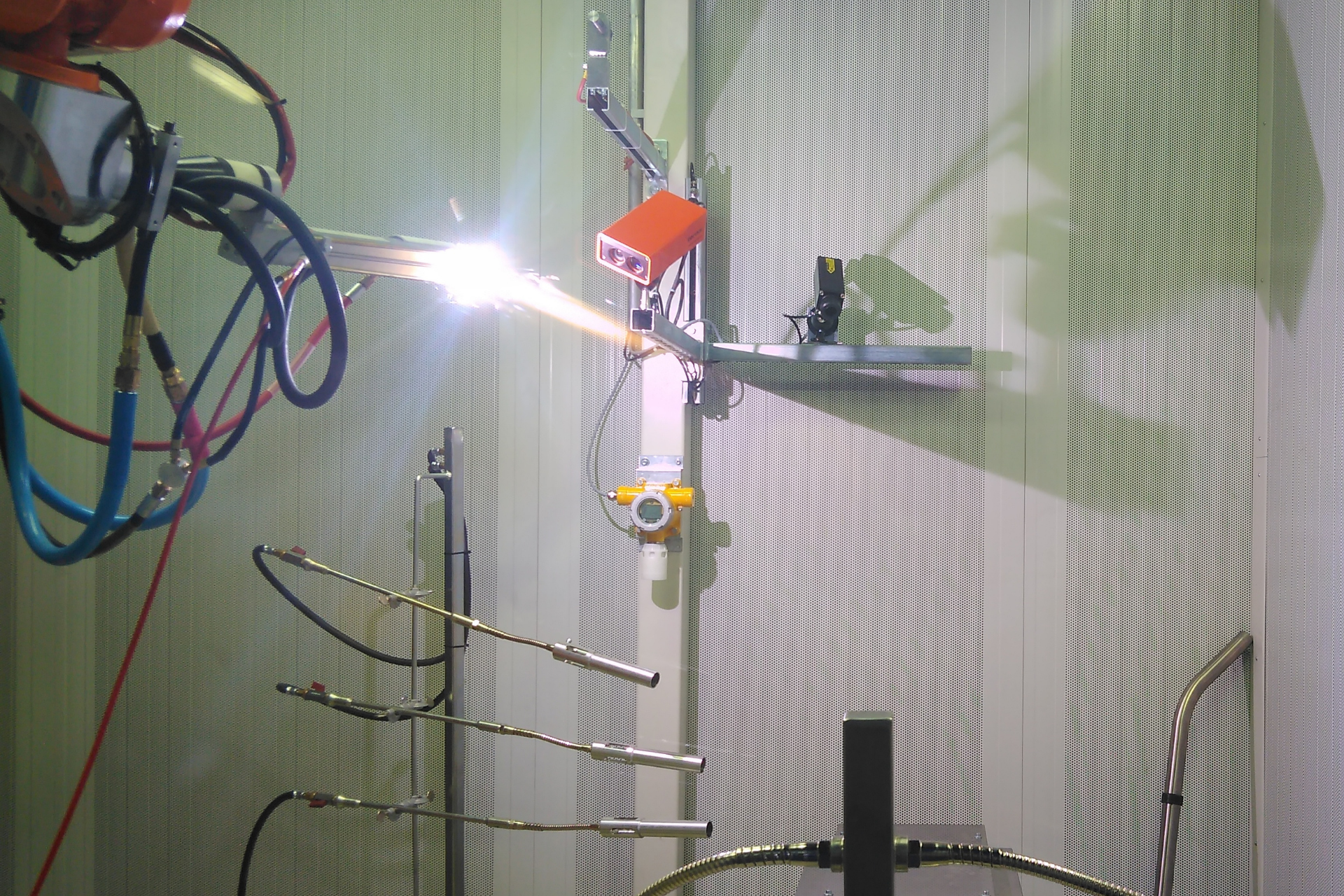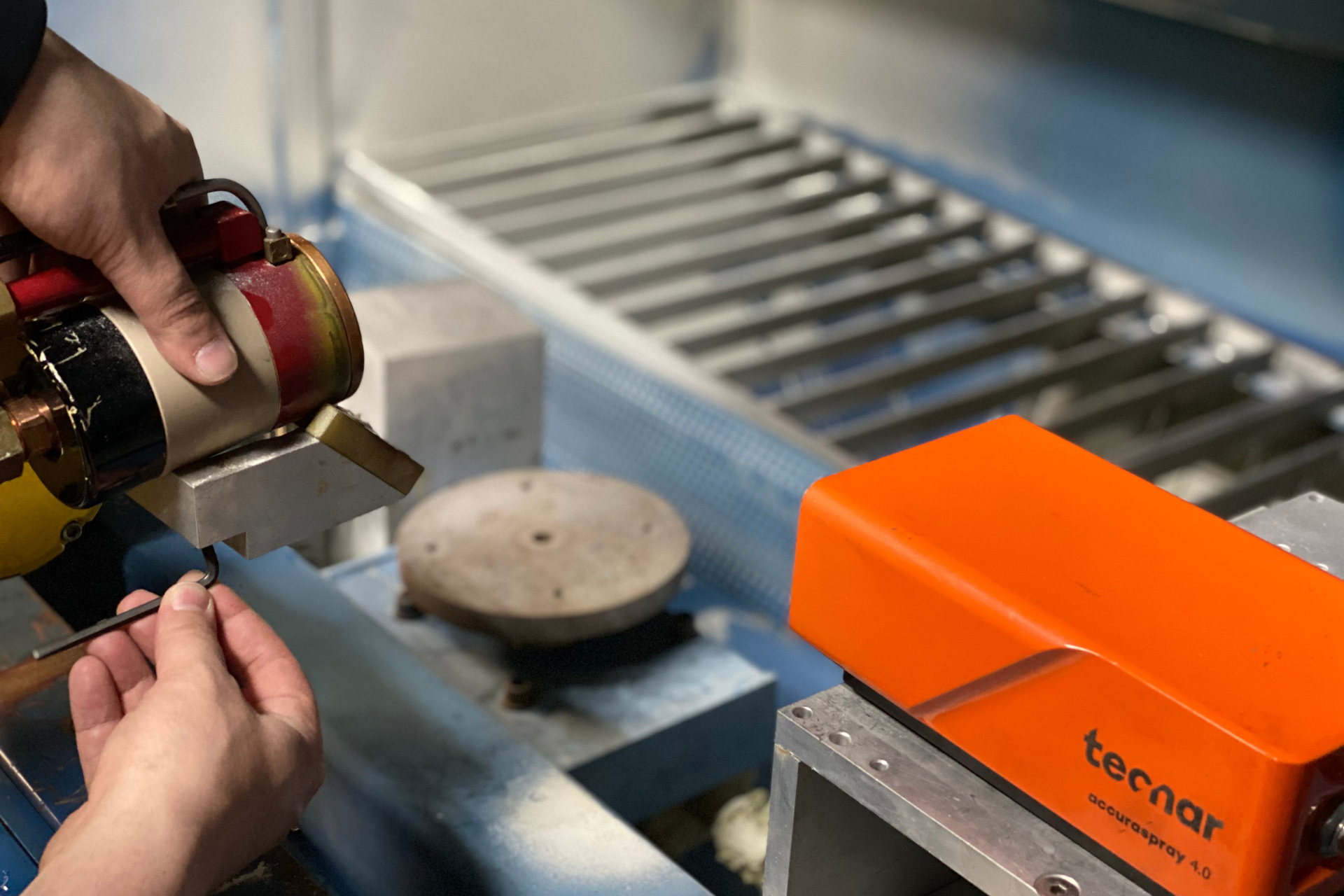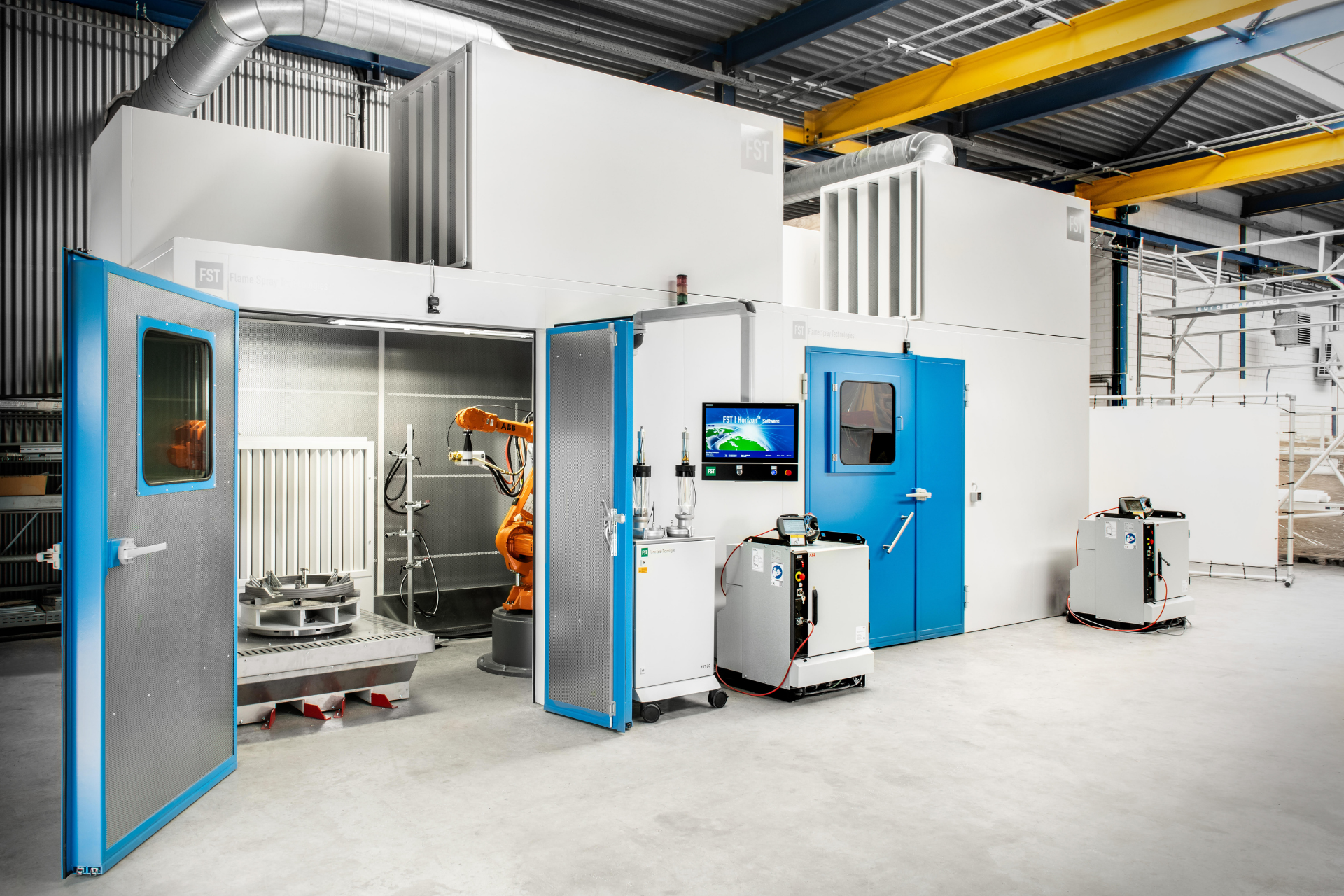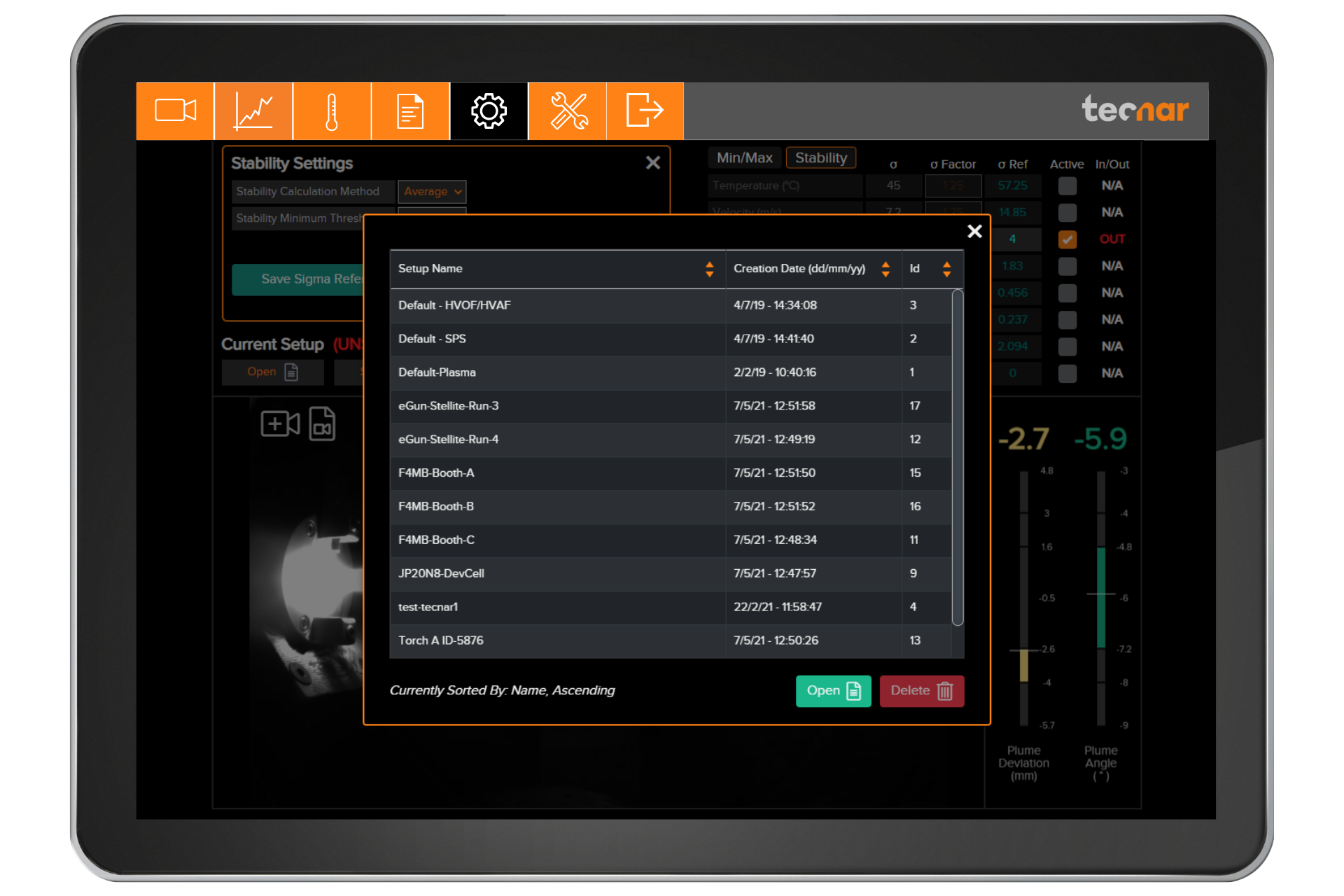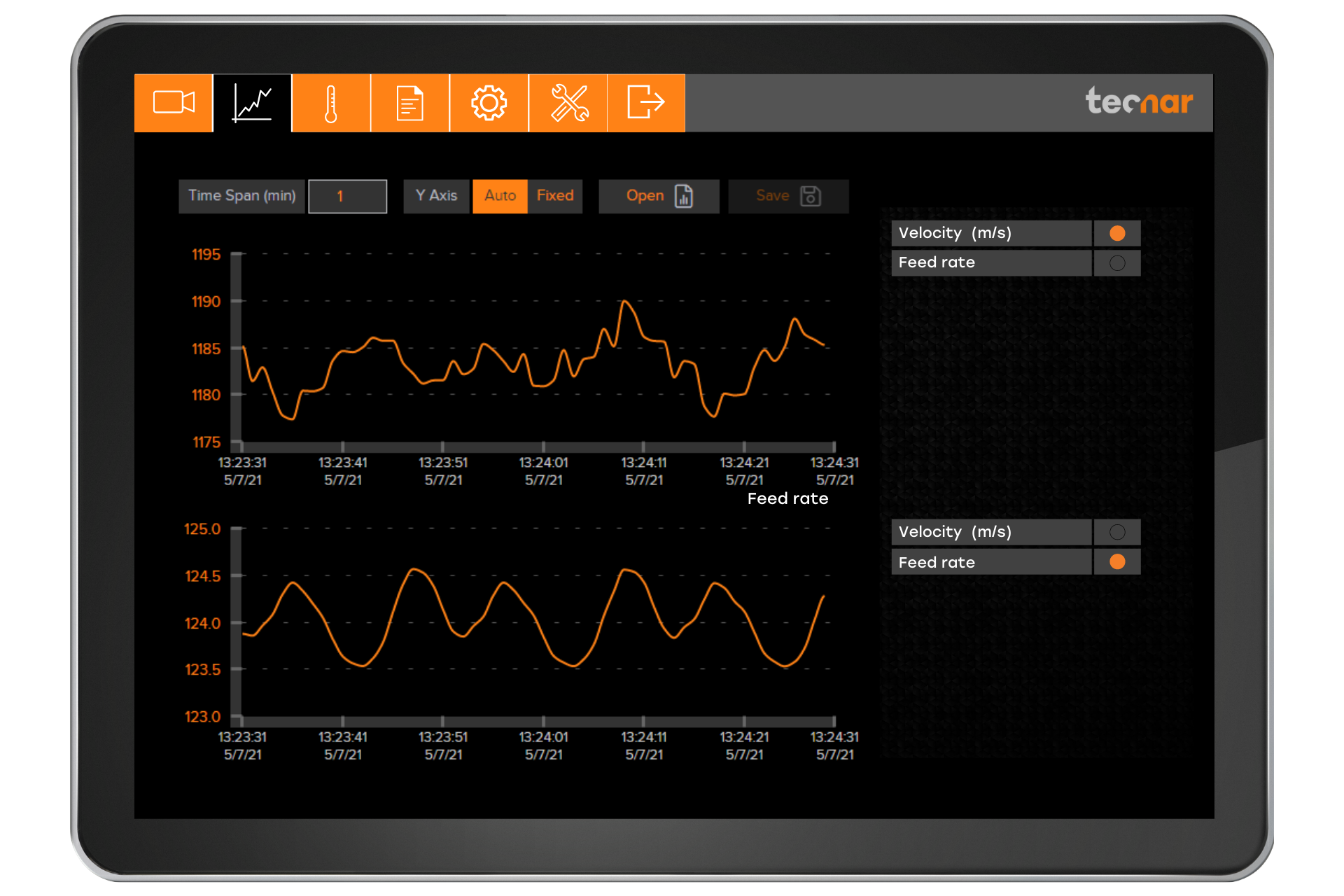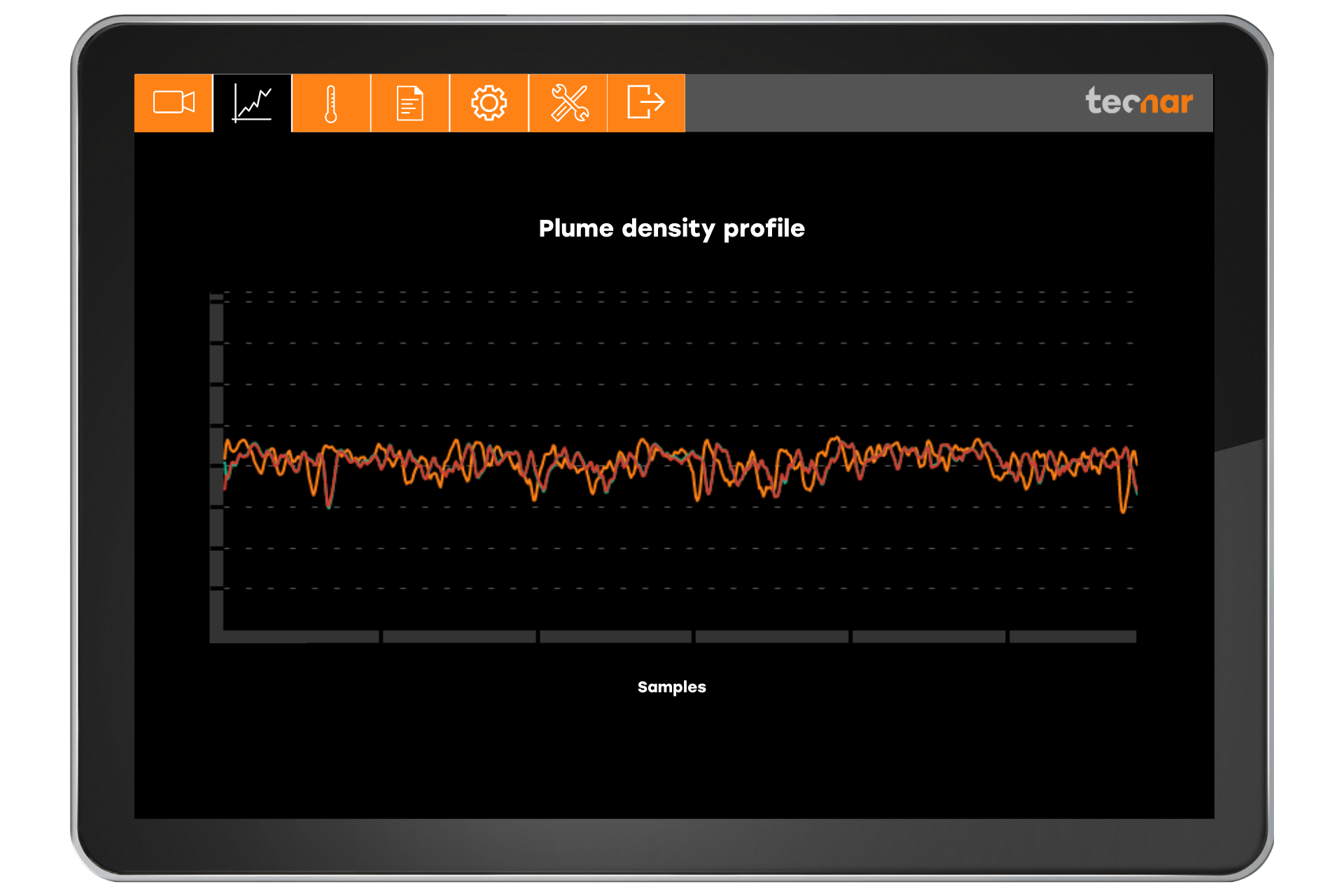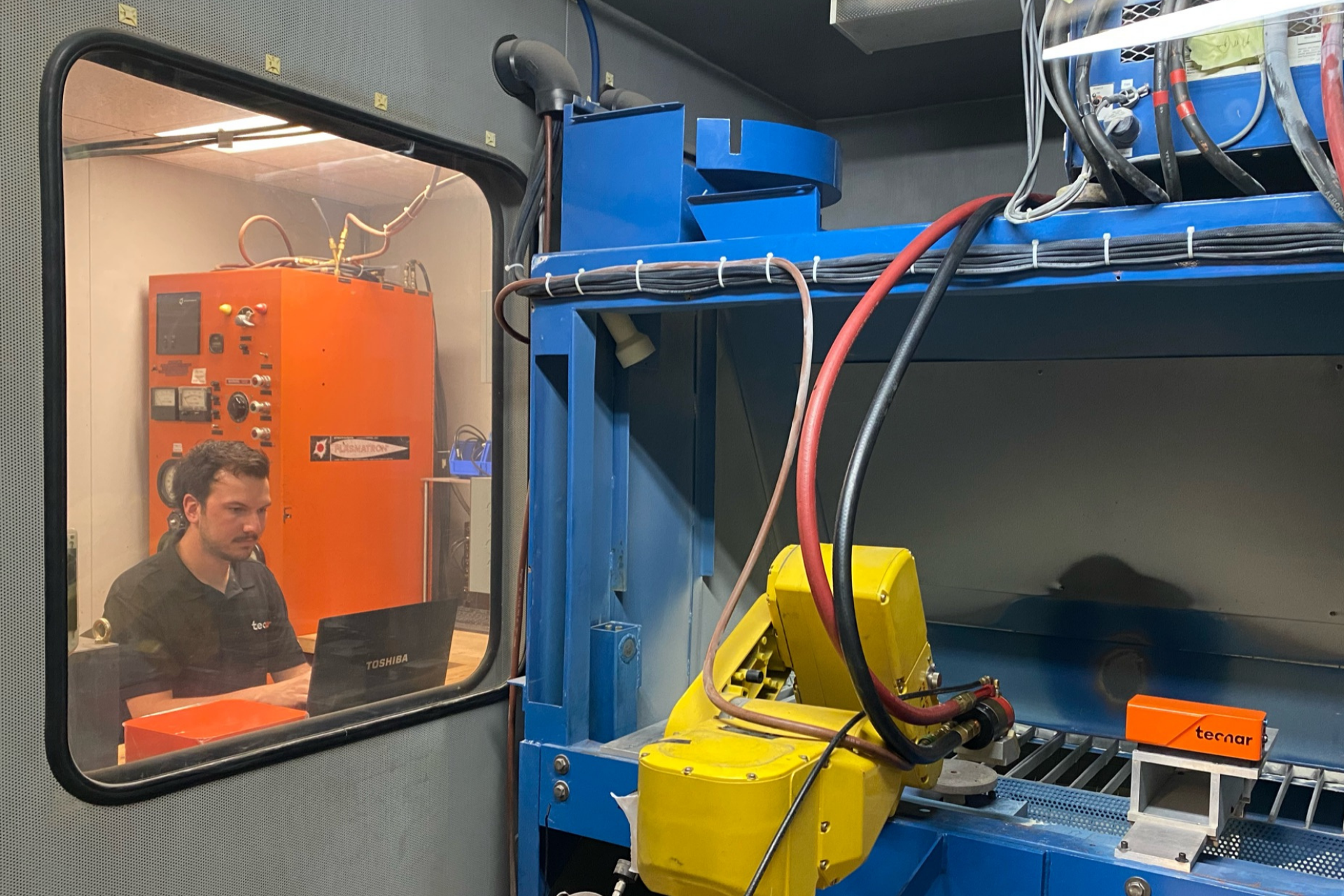Why sensors in production
Using Tecnar’s spray sensors allows real-time monitoring of the spray process to ensure the process remains within optimal limits.
Talk to an expertThermal spray sensors advantage
Ensure quality and repeatability
The regular use of a spray sensor is the ultimate industry 4.0 quality control. Users who verify their spray characteristics before they spray parts or test coupons increase their production yields, predict impending equipment malfunction and avoid production delays. What’s more, monitoring spray properties allows trained operators to adjust the spray parameters, such as the feed rate and carrier gas temperature, to achieve desired coatings.
Save time on powder or gun change
For a spray shop with multiple coating products to deliver in the shortest time, gearing up for a product change, like a new gun set-up or different powder material, can be a time-consuming puzzle. With the Accuraspray 4.0, a user who begins a new process after a product change can easily monitor and readjust the spray parameters to ensure that the spray plume is within the optimal operating conditions for that particular process.
Easy spray parameters transfer
Since each spray booth is unique, reproducing the same coating product in different spray booths is often a tedious process. We believe that true spray settings remain in the spray itself. That is why the Accuraspray 4.0 has accompanied hundreds of spray transfers around the world.
Spray parameters development made easy
Parameter development and optimization for a new product is a long iterative process that involves testing a variety of spray parameters permutations and lab analyses to achieve the right recipe and targeted tolerances. This process can often be repetitive when the equipment behaviour varies during the process. With the Accuraspray, parameter development is quick and straightforward since you monitor real-time spray characteristics. This prevents going around in circles and makes the process easy and less time-consuming.
Cold spray sensors advantage
Speed is king
Cold spray is a kinetic process that is extremely sensitive to particle velocity. Achieving threshold velocity in a cold spray process is essential. Anything below the threshold will prevent particles from sticking to the substrate and anything above might damage the coating or the subtract.
The particle velocity is affected by several process parameters, including particle size, gas pressure and nozzle geometry. Measuring the actual velocity of in-flight particles is the only way to ensure that you are spraying in the ideal conditions.
What’s your feed rate, really?
Optimized deposition rates are achieved by the right in-flight particle speed and feed rate. Measuring and maintaining a high, stable feed rate is often challenging in a cold spray process. That’s why we recommend using spray sensors to measure the feed rate. The potential of measuring feed rate in combination with velocity guarantees that you will achieve the best deposition rates your equipment can deliver.
Hands-on operators
Although the physics of cold spray is complex, the interventions required to adjust the feed rate or velocity are simple. Using sensors for velocity and feed rate monitoring helps your booth operator be proactive in maintaining the highest efficiency possible.
Ongoing support and warranty
Tecnar takes pride in offering the best engineering warranty and support in the business so you can rely on our sensors for years to come.
But don’t just take our word for it… take it from our customers.
Interested in getting the most out of your spray coating processes?
Leave your details so our experts can contact you.
Our team will answer all your questions and suggest the best solution for your needs.
